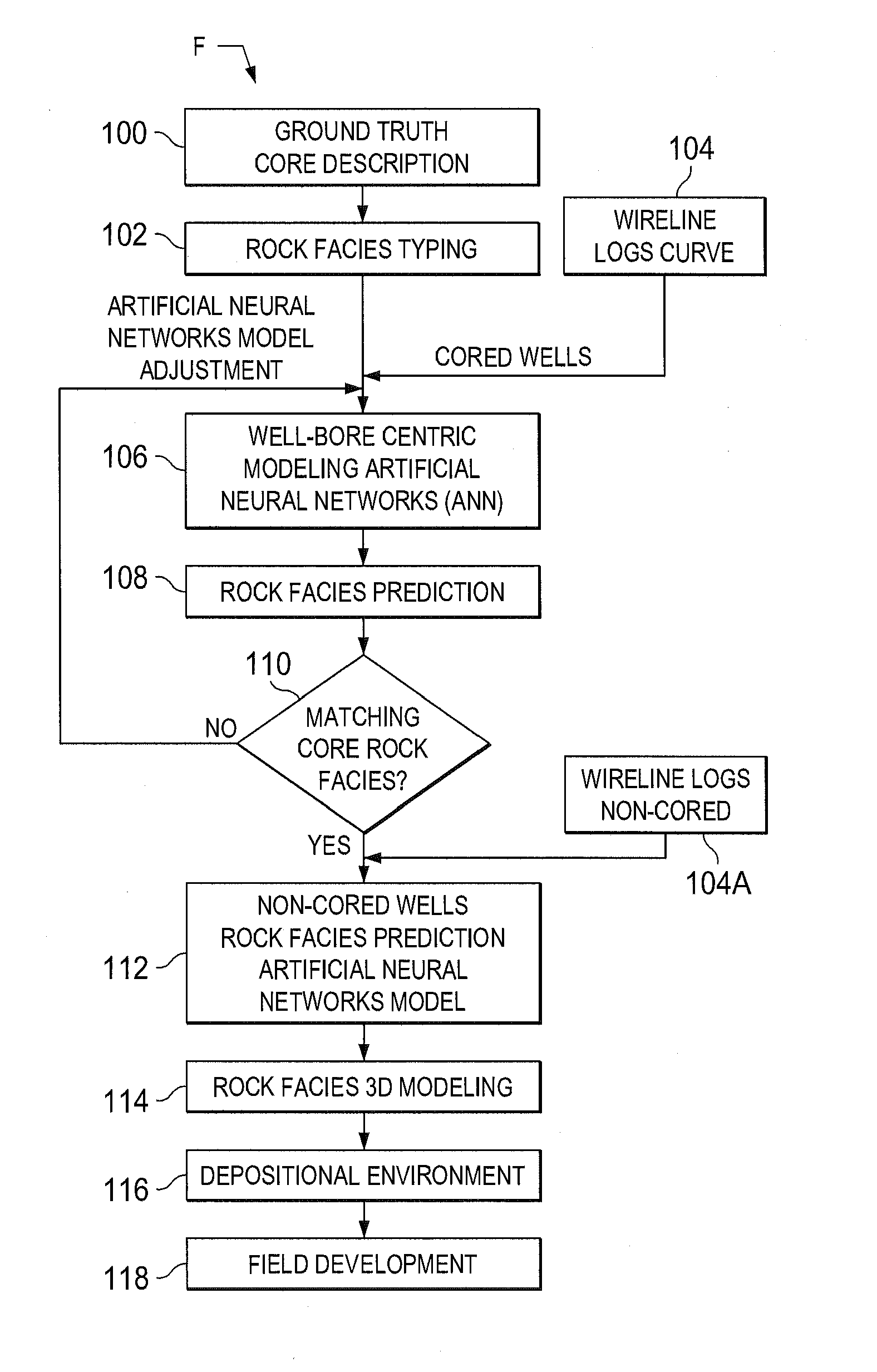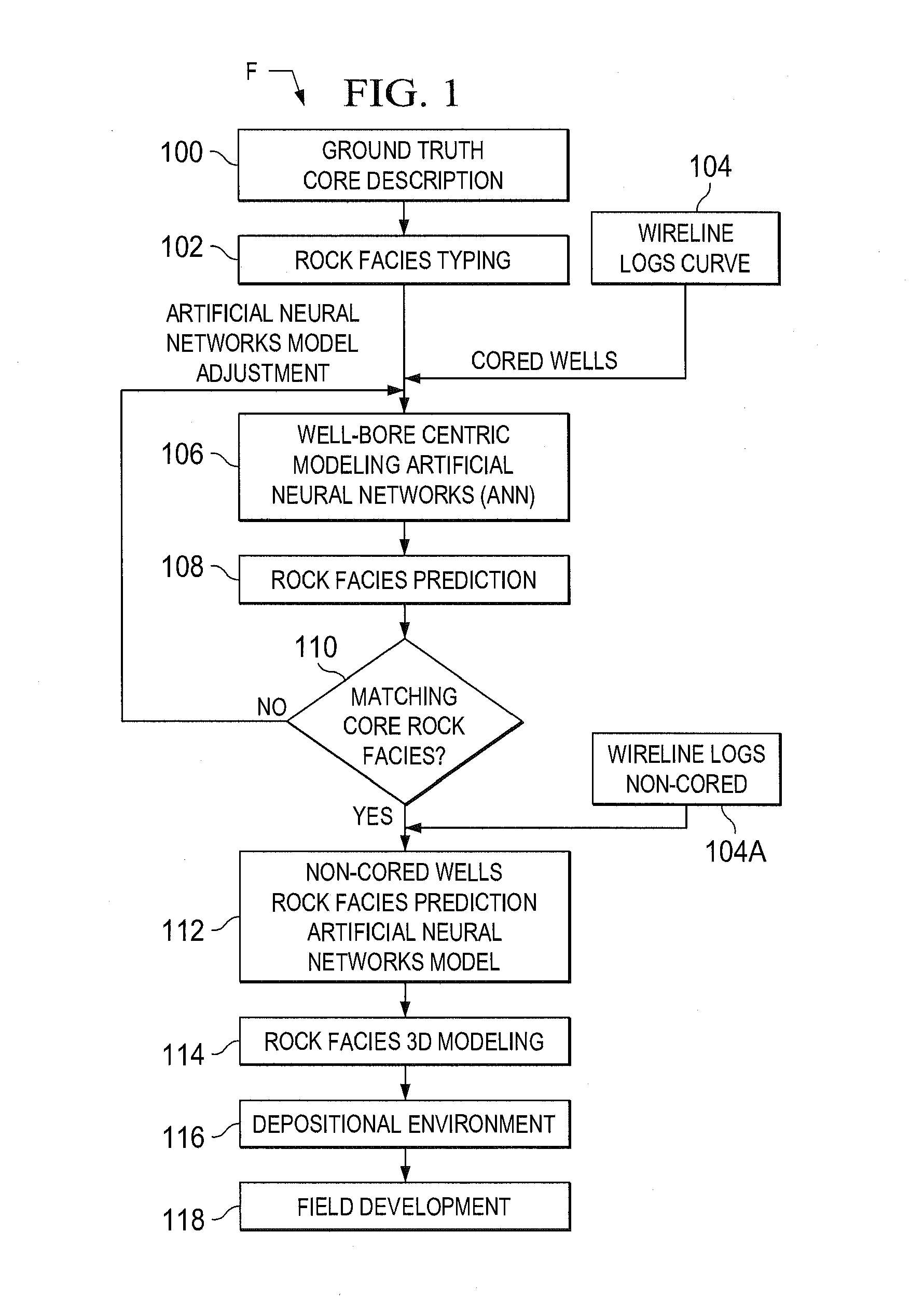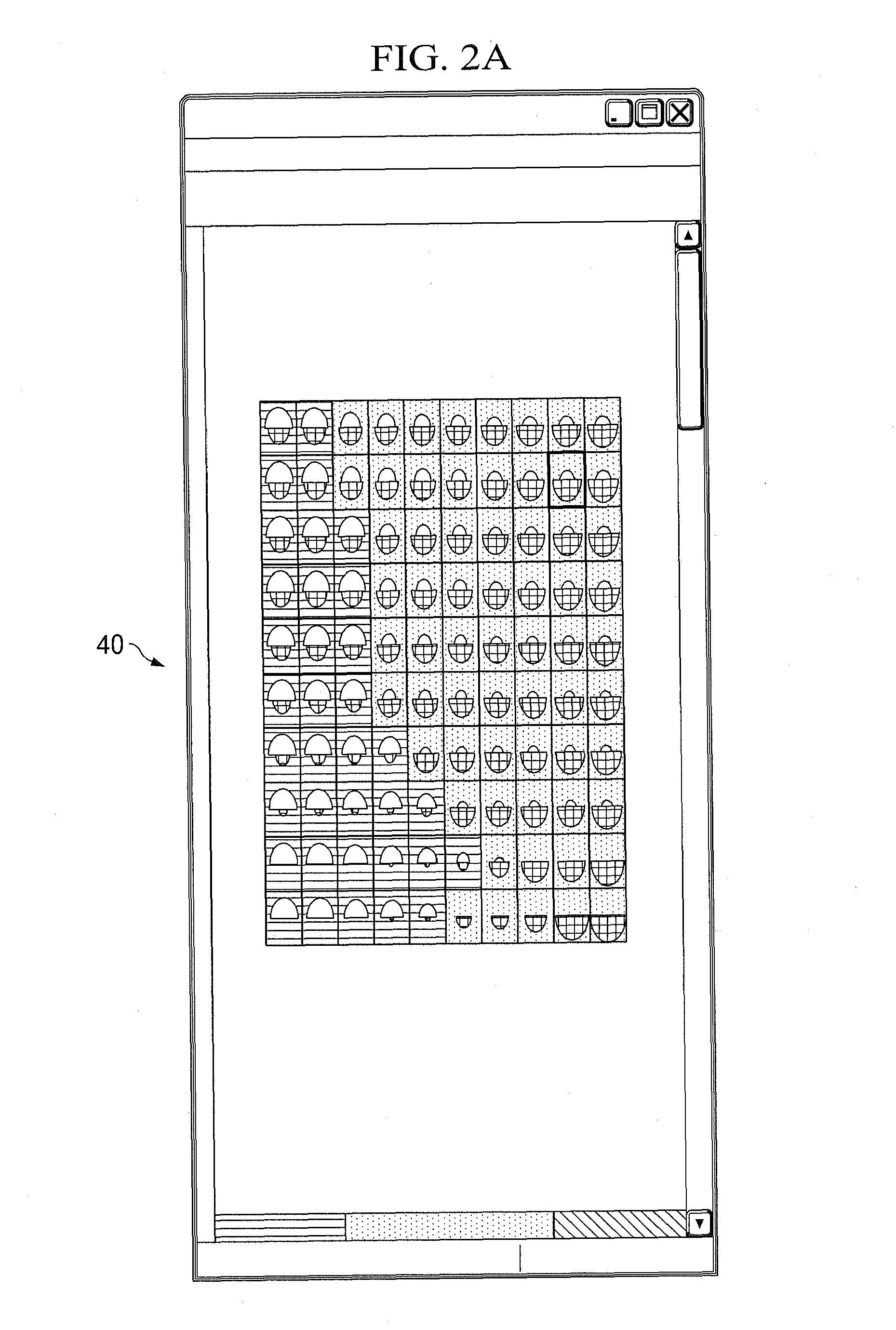Rock facies prediction in non-cored wells from cored wells
a hydrocarbon reservoir and rock facies technology, applied in the direction of seismology for waterlogging, instruments, reradiation, etc., can solve the problems of not all wells which are drilled have well cores extracted, and the extraction of rock samples is not only expensive, but also potentially damaging to the well, etc., to achieve the effect of revealing but carries a substantial cost of acquisition
- Summary
- Abstract
- Description
- Claims
- Application Information
AI Technical Summary
Benefits of technology
Problems solved by technology
Method used
Image
Examples
Embodiment Construction
[0037]With the present invention, facies in wells of a hydrocarbon reservoir are predicted or postulated. Artificial neural networks are utilized to build a training image based on rock phases which are described and interpreted for each rock facies using existing data obtained from certain wells in the reservoir, and also well log characteristics of those same wells. Well logs from wells where no well core data has been collected are then analyzed against the training image and the rock facies in the non-cored wells are postulated.
[0038]As will be set forth, the present invention first incorporates rock phases described and interpreted based on using well core data from those wells in the reservoir where cores have been obtained. Well logs characteristics of the same wells are then examined for each rock facies. The present invention utilizes the data from interpretation of the well core data and the well log data from the same wells to build a training image in an artificial neura...
PUM
 Login to View More
Login to View More Abstract
Description
Claims
Application Information
 Login to View More
Login to View More - R&D
- Intellectual Property
- Life Sciences
- Materials
- Tech Scout
- Unparalleled Data Quality
- Higher Quality Content
- 60% Fewer Hallucinations
Browse by: Latest US Patents, China's latest patents, Technical Efficacy Thesaurus, Application Domain, Technology Topic, Popular Technical Reports.
© 2025 PatSnap. All rights reserved.Legal|Privacy policy|Modern Slavery Act Transparency Statement|Sitemap|About US| Contact US: help@patsnap.com



